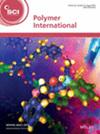Will Owens, Martin Worrall, David Norman, Myles Blurton, Fengzai Tang, Geoff West, Tony McNally
下载PDF
{"title":"Composites of an epoxy and two-dimensional boron nitride nanosheets (BNNS) as a coating for efficient thermal management of electronic devices","authors":"Will Owens, Martin Worrall, David Norman, Myles Blurton, Fengzai Tang, Geoff West, Tony McNally","doi":"10.1002/pi.6770","DOIUrl":null,"url":null,"abstract":"<p>Efficient thermal management is an increasingly important factor in the development of future electronic devices where operating speed, device lifespan and safety are determined by optimising heat dissipation to reduce component temperature. The heat generated during continuous and/or cyclic operation can be dissipated using thermal interface materials (TIMs). A facile yet novel method based on a combination of centrifugal mixing and micropipetting was very effective at accurately depositing thin layers of an epoxy filled with a highly interconnected boron nitride nanosheet (BNNS) network. The use of composites of an epoxy and BNNS as a TIM was assessed by measuring the operating temperature of a diode on a printed circuit board, to replicate in-service use, using thermal imaging. The operating temperature of the device decreased by almost 57 °C on inclusion of a BNNS volume fraction (<i>φ</i>) of 0.15 and the thermal resistance by <i>ca</i> 50%. The device displayed excellent thermal stability and a consistent temperature response during cyclical operations over 10 h. The reliability of transistors depends exponentially upon operating temperature and even a 10–15 °C reduction can double the lifespan of an electronic device. © 2025 The Author(s). <i>Polymer International</i> published by John Wiley & Sons Ltd on behalf of Society of Chemical Industry.</p>","PeriodicalId":20404,"journal":{"name":"Polymer International","volume":"74 7","pages":"553-559"},"PeriodicalIF":3.6000,"publicationDate":"2025-04-17","publicationTypes":"Journal Article","fieldsOfStudy":null,"isOpenAccess":false,"openAccessPdf":"https://onlinelibrary.wiley.com/doi/epdf/10.1002/pi.6770","citationCount":"0","resultStr":null,"platform":"Semanticscholar","paperid":null,"PeriodicalName":"Polymer International","FirstCategoryId":"92","ListUrlMain":"https://scijournals.onlinelibrary.wiley.com/doi/10.1002/pi.6770","RegionNum":4,"RegionCategory":"化学","ArticlePicture":[],"TitleCN":null,"AbstractTextCN":null,"PMCID":null,"EPubDate":"","PubModel":"","JCR":"Q2","JCRName":"POLYMER SCIENCE","Score":null,"Total":0}
引用次数: 0
引用
批量引用
Abstract
Efficient thermal management is an increasingly important factor in the development of future electronic devices where operating speed, device lifespan and safety are determined by optimising heat dissipation to reduce component temperature. The heat generated during continuous and/or cyclic operation can be dissipated using thermal interface materials (TIMs). A facile yet novel method based on a combination of centrifugal mixing and micropipetting was very effective at accurately depositing thin layers of an epoxy filled with a highly interconnected boron nitride nanosheet (BNNS) network. The use of composites of an epoxy and BNNS as a TIM was assessed by measuring the operating temperature of a diode on a printed circuit board, to replicate in-service use, using thermal imaging. The operating temperature of the device decreased by almost 57 °C on inclusion of a BNNS volume fraction (φ ) of 0.15 and the thermal resistance by ca 50%. The device displayed excellent thermal stability and a consistent temperature response during cyclical operations over 10 h. The reliability of transistors depends exponentially upon operating temperature and even a 10–15 °C reduction can double the lifespan of an electronic device. © 2025 The Author(s). Polymer International published by John Wiley & Sons Ltd on behalf of Society of Chemical Industry.
环氧树脂和二维氮化硼纳米片复合材料(BNNS)作为电子器件的有效热管理涂层
在未来电子设备的发展中,高效的热管理是一个越来越重要的因素,其中运行速度、设备寿命和安全性取决于优化散热以降低组件温度。在连续和/或循环操作过程中产生的热量可以使用热界面材料(TIMs)消散。一种简单而新颖的方法,基于离心混合和微移液的结合,可以非常有效地准确沉积充满高度互连的氮化硼纳米片(BNNS)网络的环氧树脂薄层。通过测量印刷电路板上二极管的工作温度来评估环氧树脂和BNNS复合材料作为TIM的使用,并使用热成像来复制在使用中使用。当BNNS体积分数(φ)为0.15时,器件的工作温度降低了近57℃,热阻降低了约50%。该器件在超过10小时的循环操作中表现出优异的热稳定性和一致的温度响应。晶体管的可靠性指数依赖于工作温度,即使降低10-15°C也可以使电子设备的寿命增加一倍。©2025作者。聚合物国际出版的约翰威利&;我代表化学工业协会的儿子有限公司。
本文章由计算机程序翻译,如有差异,请以英文原文为准。




 求助内容:
求助内容: 应助结果提醒方式:
应助结果提醒方式:


